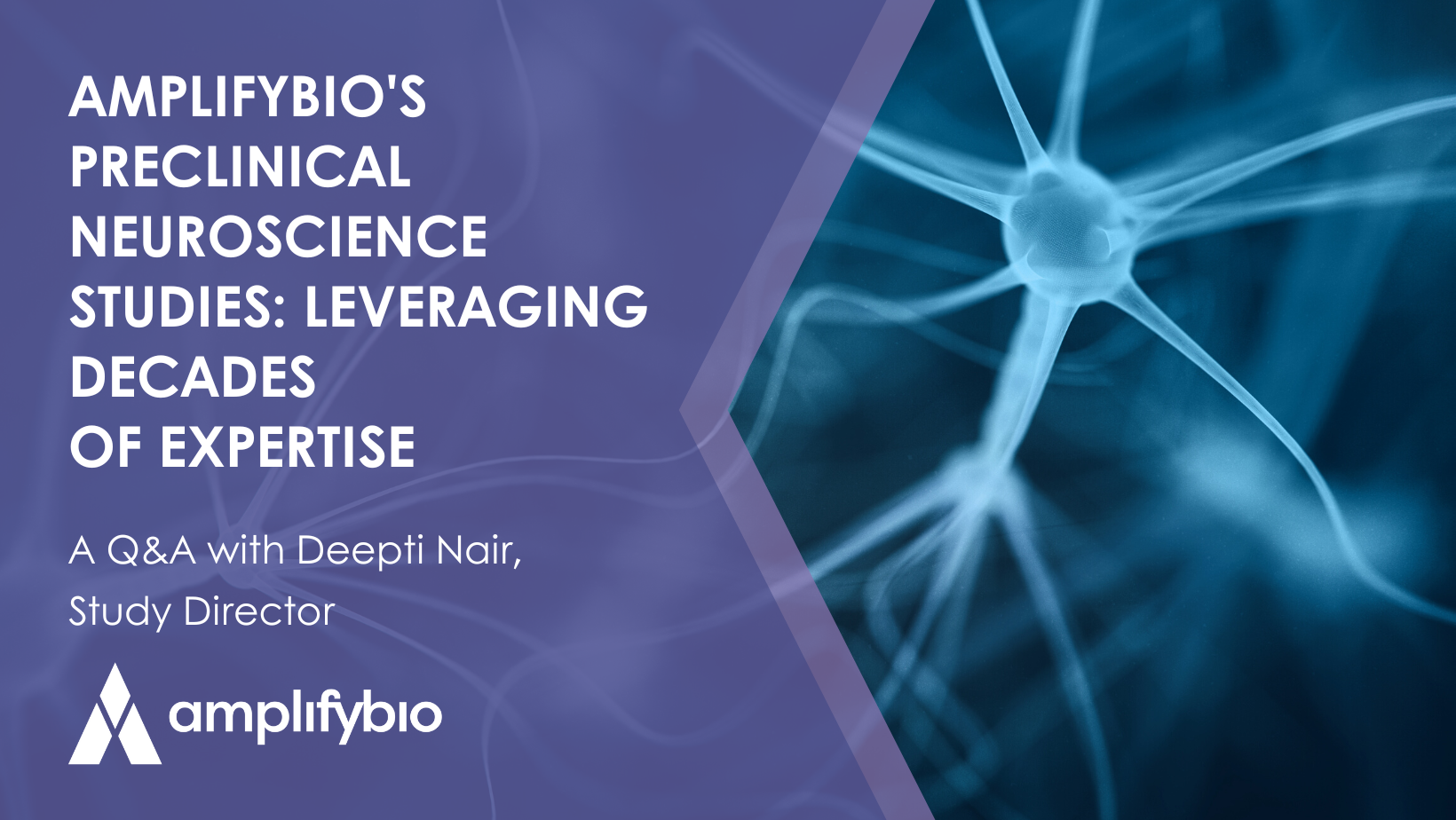
AmplifyBio's Preclinical Neuroscience Studies: Leveraging Decades of Expertise
We’re thrilled to have Deepti Nair, Study Director of neurological studies, answer a few questions about AmplifyBio’s neuroscience capabilities and the potential for the future.
Please describe your background in preclinical research and neurology. What led you to AmplifyBio?
I am an experienced behavioral neuroscientist with a Ph.D. in Neurophysiology. My passion for neuroscience began during my master’s training, where I observed stress and depression were key elements of mental health. That led me to advance my career in neuroscience by joining a lab working on stress disorders and the brain. During my Ph.D. work, I focused on understanding the mechanisms of posttraumatic stress (PTSD) in rodent models and the interactions of two major regions of the brain, such as the hippocampus and the amygdala on the hypothalamo-pituitary- adrenal axis (HPA axis) that is activated during stress. I then continued my research at the University of Chicago, investigating intermittent hypoxia, a major manifestation of obstructive sleep apnea found in rodent models and cognitive dysfunctions. My team and I developed and commercialized a novel sleep fragmentation chamber for animal models. I later transitioned to working on neonatal stress and Alzheimer’s disease models before moving on to work with mouse models of Rett syndrome and further received training in conducting GLP work with canines and NHPs. I am currently working with AmplifyBio, partnering with Battelle, and I am excited to continue my work in neuroscience.

Deepti Nair, Study Director at AmplifyBio
Can you tell me about some of the key capabilities of your lab?
At AmplifyBio, the team can run up to 160 rats per day on a variety of behavioral tests. These tests include the water maze, startle response test, open field test, and FOBs (functional observational battery tests). The water maze is a commonly used test in behavioral neuroscience. This test is used to study learning and memory, as well as spatial navigation. The startle response test measures the response to a sudden loud noise, which can provide information about anxiety and fear responses. The open-field test is used to study exploratory behavior, anxiety, and locomotor activity. Lastly, FOBs are the recommended Tier I neurotoxicity screening in preclinical safety pharmacology and general toxicity studies. This test, which is a non-invasive procedure, is geared toward identifying potential neurotoxicity caused by exposure to chemicals or potential pharmaceuticals by evaluating autonomic, neuromuscular, sensorimotor, and behavioral domains. At AmplifyBio, FOBs can be assessed by trained scientists who are blinded to dose groups and incorporated into existing study designs, reducing the number of animals and allowing correlation of the neurobehavioral assessments to other study components, such as standard clinical observations, histopathologic evaluations, toxicokinetics/pharmacokinetics, and bioanalytics.
AmplifyBio has the resources and expertise to conduct large-scale studies and provide valuable insights into various diseases and conditions’ behavioral and neurological aspects.
What new assays and studies will be coming to neurology in the future?
One avenue that we’re reintroducing is drug-self administration or drug abuse liability (DAL) assessment. Drug self-administration is a widely used technique in preclinical neuroscience studies to evaluate the rewarding and reinforcing properties of drugs of abuse or potential therapeutics. It involves training rodents to self-administer drugs by pressing a lever or performing another operant response that results in drug delivery. It can also be used to study the effects of neurological disorders, such as Parkinson’s disease, on drug-seeking behavior.
Overall, drug self-administration provides valuable insight into the neurobiological mechanisms underlying drug addiction and can be used to evaluate potential therapeutics for treating addiction and other neurological disorders.
How do you see neurology complementing the other study functions at AmplifyBio?
In our pathology department, the new addition of Visiopharm will be key for stereological evaluation of how many neurons are present in a section via automatic counting, allowing us to quickly determine if there is cell death (apoptosis) or formation of new neurons (neurogenesis). Additionally, our histology group has added an immunohistochemistry (IHC) stainer (Leica BOND Rx), which provides high-throughput IHC capabilities for biomarker identification of neurological disorders, in-situ hybridization (ISH), and more.
An essential factor in enhancing the effectiveness of gene therapies for neurodegenerative diseases is delivering treatments before the onset of neurodegeneration. Furthermore, gaining a deeper understanding of the factors contributing to these diseases can aid in developing more accurate preclinical models, ultimately enabling better prediction of clinical success.
Read More:
AmplifyBio Neuroscience Study Capabilities
Download Neuroscience Capabilities Flyer
Contact Us
As an expert contract research organization (CRO), AmplifyBio leverages decades of experience to create modern commercial drug development solutions. From preclinical CRO needs to cell and gene therapy and advanced therapy testing, our accredited team designs innovative paths to produce globally recognized studies, services, and more.

